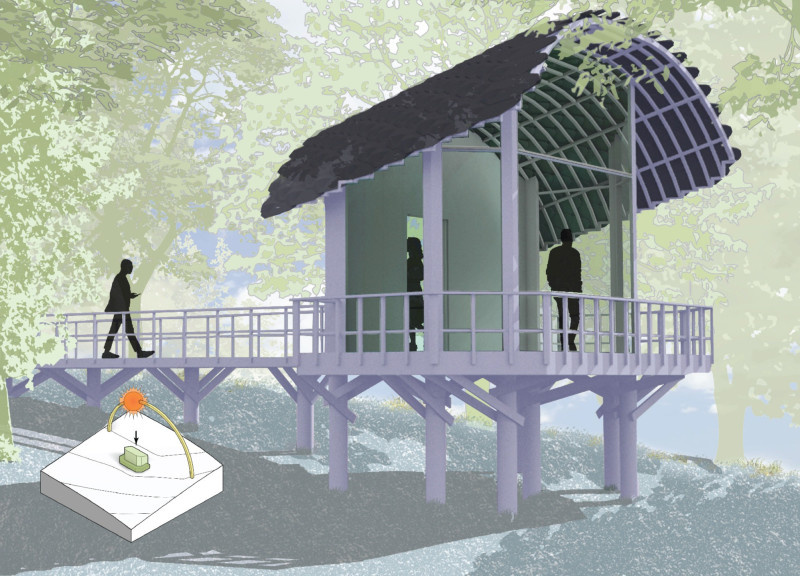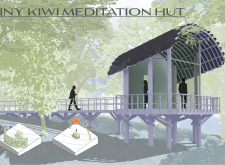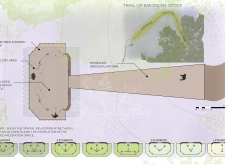5 key facts about this project
The project represents a blend of modern practice and ecological awareness, aiming to create a meditative sanctuary that benefits both users and the environment. Its primary function revolves around facilitating meditation and reflection, providing individuals a dedicated place for practice, with capacities for both solitary and small group sessions. The design integrates seamlessly into the landscape while employing sustainable building methods and materials.
The architectural approach taken in the Tiny Kiwi Meditation Hut features several unique aspects. The structure is designed with a kinetic roof system inspired by the cones of the Kauri tree, reflecting the natural forms around it. This roof serves a dual purpose: it provides necessary shelter while allowing for adaptive ventilation. The capability of the roof to open not only enhances the indoor environment but also emphasizes the design’s connection to nature.
The use of locally sourced wood as the primary material contributes to the hut’s aesthetic, evoking warmth and a sense of connection to the landscape. Reinforced glass is utilized in the construction of expansive windows, allowing natural light to flood the interior and creating unobstructed views of the environment. The choice of materials also aligns with sustainable practices, utilizing 3D-printed paneling and photovoltaic cells that support the hut's energy needs.
Further detailing contributes to the functionality of the space. The elevated platform design minimizes the ecological footprint, ensuring that the structure coexists harmoniously with the terrain. The deck surrounding the hut extends the meditation experience outdoors, providing a seamless transition between the interior and the surrounding nature. This allows users to benefit from both sheltered and open-air environments.
The layout of the interior promotes flexibility, supporting various meditation practices and accommodating diverse group sizes. The organization of the space, with clearly defined areas for instruction and contemplation, enhances the overall user experience.
The architectural design and construction of the Tiny Kiwi Meditation Hut emphasize sustainability and environmental integration, creating a dedicated space for mindfulness and meditation. For further insights into this project, including architectural plans, sections, and additional design details, readers are encouraged to explore the project presentation in more depth.


























